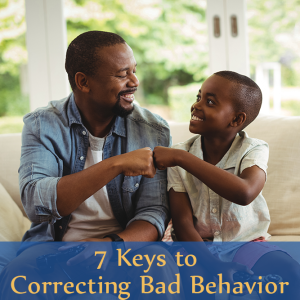7 Tips For Reducing Stress and Anxiety In Children
Families are concerned about their children who are struggling with stress and anxiety. Why are stress and anxiety so prevalent nowadays, and what can families do to help in loving ways?
Understanding Stress and Anxiety
Stress and anxiety are real feelings that many children suffer with daily. According to Georgetown University Health Policy Institute Center For Children And Families, “By 2020, 5.6 million [U.S.] kids (9.2%) had been diagnosed with anxiety problems and 2.4 million (4.0%) had been diagnosed with depression.”
This staggering number was gathered pre-COVID shutdowns. Parents tell me regularly that “since COVID” their child has experienced anxiety, stress and/or depression that led to not wanting to try new things or step out of comfort zones, anti-social tendencies, increased fear and apprehension, and general disempowerment. So, likely the number of anxiety and depression cases in children have significantly increased since COVID shutdowns.
All children experience some moments of stress and anxiety during childhood and adolescence due to being small, learning, and experiencing new things. Historically, however, most children have just kept moving forward with life despite the regular occurring fears and discomforts. However, now many children are routinely resisting forward movement altogether. When a child is stuck in a state of anxiety, then they might be having anxiety disorder, as opposed to just experiencing some anxiety. Anxiety disorder can be influenced/induced both by genetics and/or environment.
Another culprit being linked to higher levels of anxiety and less well-being is screens. In June 2021, San Diego State University psychologist Jean Twenge and University of Georgia psychology professor W. Keith Campbell wrote an article called, “Associations between screen time and lower psychological well-being among children and adolescents: Evidence from a population-based study,” which appeared in Preventative Medicine Reports. Twenge and Campbell found that “adolescents who spend more than seven hours a day on screens were twice as likely as those spending one hour to have been diagnosed with anxiety or depression…” For many children engaged in online or digital schooling, this daily time amount could easily be reached.
“Moderate use of screens, at four hours each day, was also associated with lower psychological well-being than use of one hour a day… Among preschoolers, high users of screens were twice as likely to often lose their temper and 46 percent more likely to not be able to calm down when excited.”
“The study provides further evidence that the American Academy of Pediatrics’ established screen time limits – one hour per day for those aged 2 to 5, with a focus on high-quality programs – are valid, Twenge said.” (Jim Folk, anxietycentre.com )
7 Tips For Reducing Stress and Anxiety
Anxiety and stress are big problems in our modern culture. In fact, the easier life gets, the harder stress and anxiety are to reduce. Cultures who have bigger daily workloads often experience less anxiety and have a greater sense of wellbeing. “In a paper published in the journal Psychological Science, US researchers show that busy people are happier than those that are idle or lazy.” (Dani Cooper, ABC Science)
Reducing stress and anxiety takes practice. Stress management starts when a child is small. This means that those little heartaches and childhood struggles are good for people to experience.
What happens to the brain when a person has anxiety or stress? When a person experiences stress or anxiety, the amygdala center, or the emotional part of their brain, is working overtime to try to solve their problems. If the stress or anxiety increases, the person could panic and end up using the back part of the brain, which is often called the ‘fight or flight’ part of the brain. When a person is thinking with their front brain, they have 100% ability to think. When they are thinking with their amygdala, they have decreased ability to problem solve to about 40%. As stress and anxiety increase, the sympathetic nervous system takes over, acting like a gas pedal in a car giving the person a burst of energy, but also inhibiting thought. When a person is in this anxiety energy burst, elevated heart rate state, they struggle to connect thoughts well. It often feels like only having about 10% ability to solve problems. Not being able to think usually causes more panic for the person.
What parents can do to help children stay in the front brain and step out of their comfort zones more.
- Teach the child about how their brain works. Really talk to them about the different parts of the brain and when they can problem solve best.
- Keep giving them opportunities to do things that they didn’t think that they could do or have never done before. Work with children and teach them adult skills. This helps them practice stepping out of their comfort zones and increases confidence while also giving them perspective about life and challenges.
- Teach them how their feelings, thoughts and emotions work together, and which thoughts lead to productive or nonproductive emotions. Feelings can’t be controlled and need to be understood. Dr. Daniel Goleman, the father of Emotional Intelligence, taught that thought comes after the feeling, and that thought is a choice. If the thought is nonproductive, it can be altered ‘at will’ to form a more productive thought about the feeling being experienced. He also taught that productive and nonproductive emotions that follow the thoughts are alterable by choosing thoughts carefully. We can help our children understand their feelings, thoughts, and emotions and help them choose productive thoughts and emotions so that they can better be understood and feel more in control of themselves. This known ability to choose thoughts is the foundation behind the successful therapy called Cognitive Behavioral Therapy [CBT].
- Develop a habit of talking about what is going on inside the brain and body. Parent talk sessions, family meetings, and the self-government skill Disagreeing Appropriately are all useful for helping youth open up and talk about what’s going on inside without feeling like they are disappointing their parents.
- Learn how to solve problems using the SODAS problem solving format. SODAS stands for Situation, Options, Disadvantages, Advantages, Solution. Looking at multiple options and all the disadvantages and advantages of each option helps a person see why they keep thinking or choosing the same nonproductive thing and what alternative will serve them better. This exercise can help people see a way to not get stuck in anxiety and stress. More details on how to use this exercise are contained in the book Parenting A House United.
- Learn how to drop the subject when needed. Accepting “No” Answers is a skill that helps with this. When a person experiences a nonproductive thought, they can learn to give themselves a “no” answer. And when managing screens, the Accepting “No” Answers skill is going to be vital for success at getting the screens out of the child’s mind. After getting a “no” answer for screens, a person who is dropping the subject will tell themselves to move on to a productive activity. If they go back to the device, it will bring back the thoughts that they don’t want to keep processing. Devices, especially phones, have a way of getting us all stuck processing the same things again and again. This is the recipe for anxiety.
- Learn about calmness and have a “calm plan” that children can rely upon, even if it looks like they don’t want to use it in the minute. The predictability will decrease anxiety and help them take steps in a good direction toward calmness during the hardest anxiety moments. Parents can prepare children to decrease stress by planning for calmness for themselves and their children. A calm parent will lead their child toward calmness too.
It’s impossible for us to create a world where no one experiences stress or anxiety. Working through stress and anxiety are part of growing our capacities and maturing. But, we don’t need children to feel alone or misunderstood in their stresses and anxiety. We can assist them by teaching them what is really going on inside and create communication structures and skills that can help them through difficult moments. Children need parents more than ever before! The screens are telling them that they can’t do anything about their stresses and anxiety, and that it’s the rest of the world that must change to make them feel okay. This approach to emotional peace is disempowering, dishonest, and will never work. Anxiety moments are meant to help us test our strength and learn new skills. And, we don’t have to do it alone. Getting through these rough times is what families are meant for.
Get Parenting A House United to learn more about the suggestions mentioned in this article.
Index
- Accepting No Answers and Criticism, Addictions, Adult Children, Adults, Age, Analyzing, Anxiety, Attitude, Behaviors, Boundaries, Calm, Changing Hearts, Character Building, Common Vision Creation, Connecting (Looking in the eyes), Consequences, Control, Correcting, Culture, Depression, Disagreeing Appropriately, Dropping the subject, Emotions, Encouragement, Entitlement, Family Culture, Family Unity, Following Instructions, Four Basic Skills, Grandparents, Group Problem Solving, Health, Media, No Answers, Power of Calm, Praise, Pre-Teach, Problem Solving, Relationships, Respect, Rewards, Roles, Skills, Social, Social Skills, SODAS: Problem Solving Exercises, Structure, Teens (Youth), Toddlers & Younger Children, Tone, Tweens, Unity, Urgency Addictions, Vision





